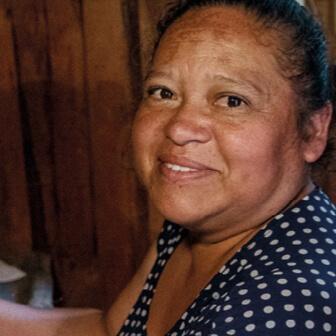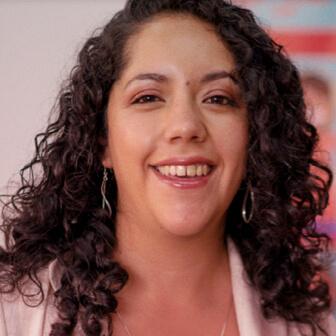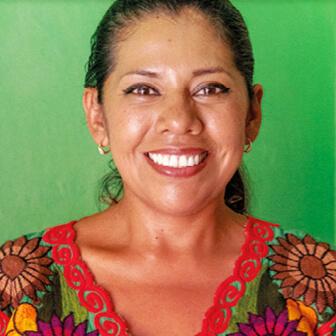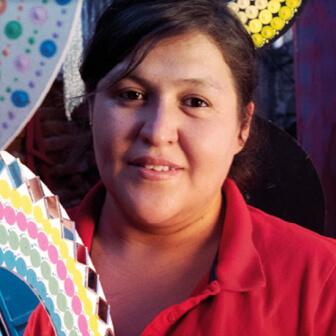Empowering Women through Investment by Gema Sacristán
1 December, 2022
Blog
Gender lens investing has multiple forms, but they all have the same goal: reduce the gender gap to unleash women’s value and unlock the region’s economic growth, potential, and resilience.
By Gema Sacristán, Chief Investment Officer, IDB Invest, and Ignez Tristao, IDB Country Representative – Guatemala
Gender lens investing is a recently coined term. This type of financing seeks to generate a financial return and increase gender equality through access to finance and investment. It also includes investments in businesses that support women’s leadership. Ultimately, gender lens investing is about creating opportunities for women in an environment where, according to the World Economic Forum, men earn 40% more than women. In Latin America and the Caribbean, the economic gender gap is 36%, higher than in Europe (29%) and the United States (23%).
How to Incorporate a Gender Lens Multiple studies have shown that empowering women translates into more and better growth and more stable and resilient economies. McKinsey estimates that unlocking women’s economic potential could add between $12 trillion and $28 trillion to global annual GDP. Eliminating gender barriers is even more urgent in emerging economies where progress is slower and where it has slowed even further during the pandemic—and women’s economic potential would provide an interesting countercyclical counterweight to the labor market. In other words, betting on gender equality isn’t just the right thing to do. It’s the economically smart thing to do, and it will allow society to continue to grow, improve, and develop.
Gender lens investing can be adapted using three different approaches, or lenses, based on the final objective.
Lens 1: Boost women’s ownership and leadership
Access to Finance
LAC has been a pioneer in the microcredit and microloan sectors, which have been enormous and necessary contributors to women’s financial inclusion. According to the World Bank, only 49% of women in Latin America and the Caribbean have a bank account. Only 11% are able to save, and 10% have access to credit. In addition to this demonstrated need, two investment theses support loaning to women: they are better payers (women had a default rate of 7% versus 10% for men in 2020), and they save more than men (women have an 85% loan-to- deposit ratio versus 140% for men).
Pro Mujer, the BBVA Microfinance Foundation, and MiBanco are well-known leaders in the microfinance sector. But banks have also seen a business opportunity. They are developing value propositions that combine financial products, such as loans, with non-financial products, such as training, mentoring, and access to networking opportunities. Impulsa (Banistmo), Mujeres Emprendedoras (Banco Itaú), GyT Mujer (Banco GyT Continental), Banca Women (Santander Río), and Crece Mujer (BancoEstado de Chile) are just a few examples. LAC has the most significant representation (22 institutions) in the Financial Alliance for Women, a global association of 85 institutions whose objective is to boost women’s economic advancement through financial intermediaries.
Women’s entrepreneurial streak quickly comes to the surface once they gain access to financing. It is estimated that 33% of businesses worldwide are owned by women, a percentage that rises to 50% in LAC.
There are also additional options beyond microloans and credits, ranging from crowdfunding platforms, like IDEA-ME, KIVA, Broota, and Microwd, to fintech alternatives, including Mexican companies Lidh and Jefa and Colombian company Juancho Te Presta.
Equity Investing
Multiple seed, VC, and growth-stage investment funds are now active in Latin America. These include funds like Amplifica Capital, NXTP, and the New Ventures Viwala Fund. Investing in these funds is profitable. Boston Consulting Group calculates that each dollar invested in VC provides returns of 2.5x.
Moreover, closing the investment circle gives rise to success stories, including startups founded by women that have reached unicorn status (tech-based companies with exponential growth and a value of more than USD 1 billion). Habi (Colombia), Stori (Mexico), Open Co (Brasil), and Shopper (Brasil) are just some examples of local unicorns.
Public Debt: Gender Bonds
One of the most innovative assets that has emerged over the past few years is gender bonds. LAC is a global leader in this innovative structure, both in terms of the number of bonds issued and the issuer’s location, and has achieved significant milestones, such as the first outcome- linked gender bond in the world, issued by Davivienda in 2020. This has undoubtedly opened the door to issuing sustainability-linked bonds tied to gender objectives, which has never been done.
Lens 2: Encourage gender equality policies and women’s leadership
The second lens seeks to promote gender equality policies and female leadership in the workforce and leadership positions. According to Deloitte, in LAC, women hold only 10.4% of board positions (versus 19.7% worldwide) and represent only 1.6% of CEOs (5% worldwide). This second lens is also an extension of the first, as it has been proven that businesses founded or run by women are more gender-sensitive. According to Deloitte, when a company’s CEO is a woman, women also hold 33.5% of board seats, well above the 19.4% when the CEO is a man.
It is also possible to invest through gender bonds focused on getting more women into leadership roles. However, these structures are more frequent in developed countries. Another option is to invest via listed and unlisted indexes made up of companies committed to women and gender equality. The Bloomberg Gender Equality Index is perhaps the most well-known of these indexes, and the Mexican stock exchange BIVA just launched a similar product. The financial arguments in support of these products are compelling: companies that promote diversity achieve 45-55% higher returns on investment, according to McKinsey.
Lens 3: Promote products and services that improve women’s lives
Everything that involves women is a business opportunity in and of itself. The data speaks for itself: women make the majority of purchasing decisions (80%), and their wealth is growing at an annual rate of 6%-7% and represents between $80 trillion and $90 trillion, according to Boston Consulting Group.
This explains the large number of companies emerging to address women’s specific needs, especially in the field of femtech: technology-based companies focused on improving women’s health, e.g., the successful New York-based online women’s health clinic Maven. In LAC, it is worth mentioning the apps Lunar (Argentina), Theia (Brazil), and Plenna (Mexico).
Conclusions
Without a doubt, innovation has partnered with finance to drive gender lens investing. The objective is clear: break down the obstacles that prevent women from realizing their full potential, accessing financing, and being able to create and lead their own businesses to unleash women’s full potential.
IDB Invest, the private sector arm of the IDB Group, has played a vital role in gender finance initiatives in LAC through its leadership, support, and unyielding commitment to gender equality. We have been pioneers in promoting microfinance through the IDB Group’s innovation laboratory (IDB Lab). We have supported over 30 banks to develop programs to reach women and contributed to financial innovation through gender bonds.
We are experiencing a genuine wave of change which, in addition to being an investment opportunity, is also an opportunity to change the world and, incidentally, to make way for women to take their rightful role in the world of finance, an area that until now has been very much focused on men and their needs. To achieve this, we must work together, men and women, working to reach the same goal. Only then will we be able to create a more egalitarian, prosperous, and resilient world






